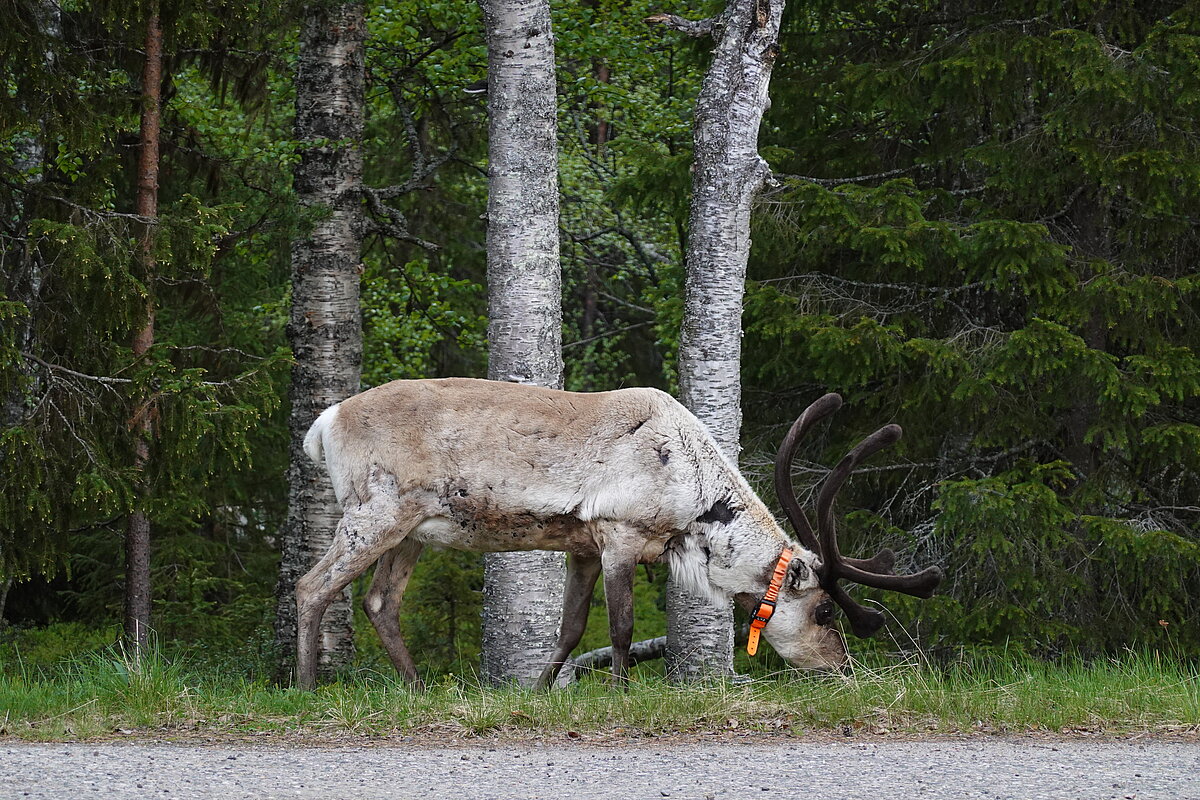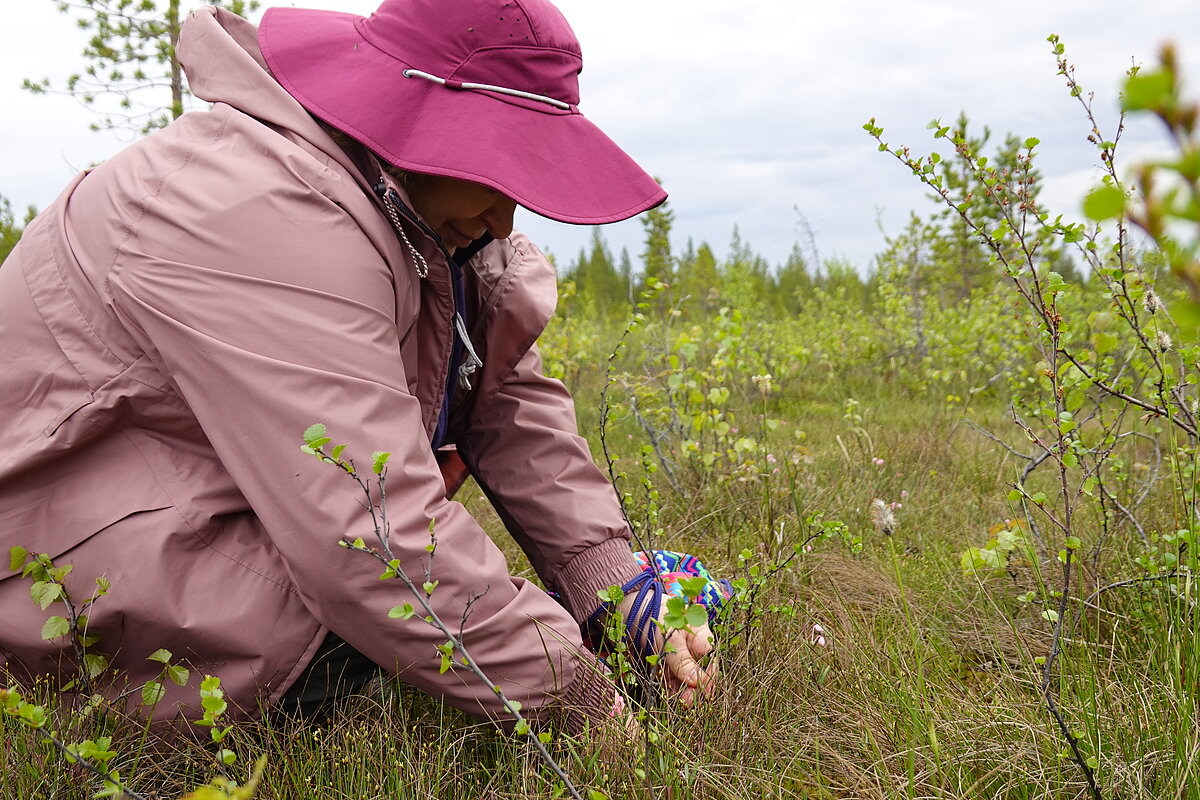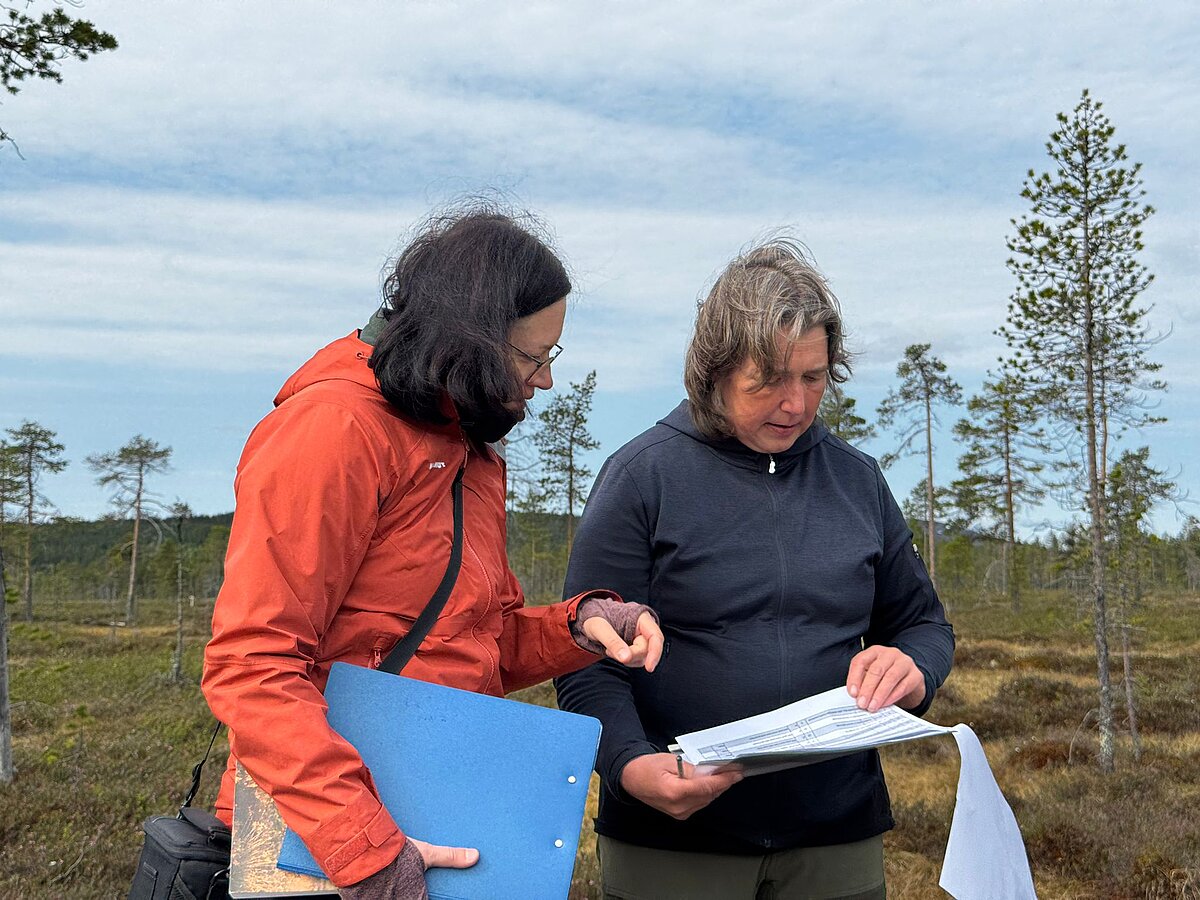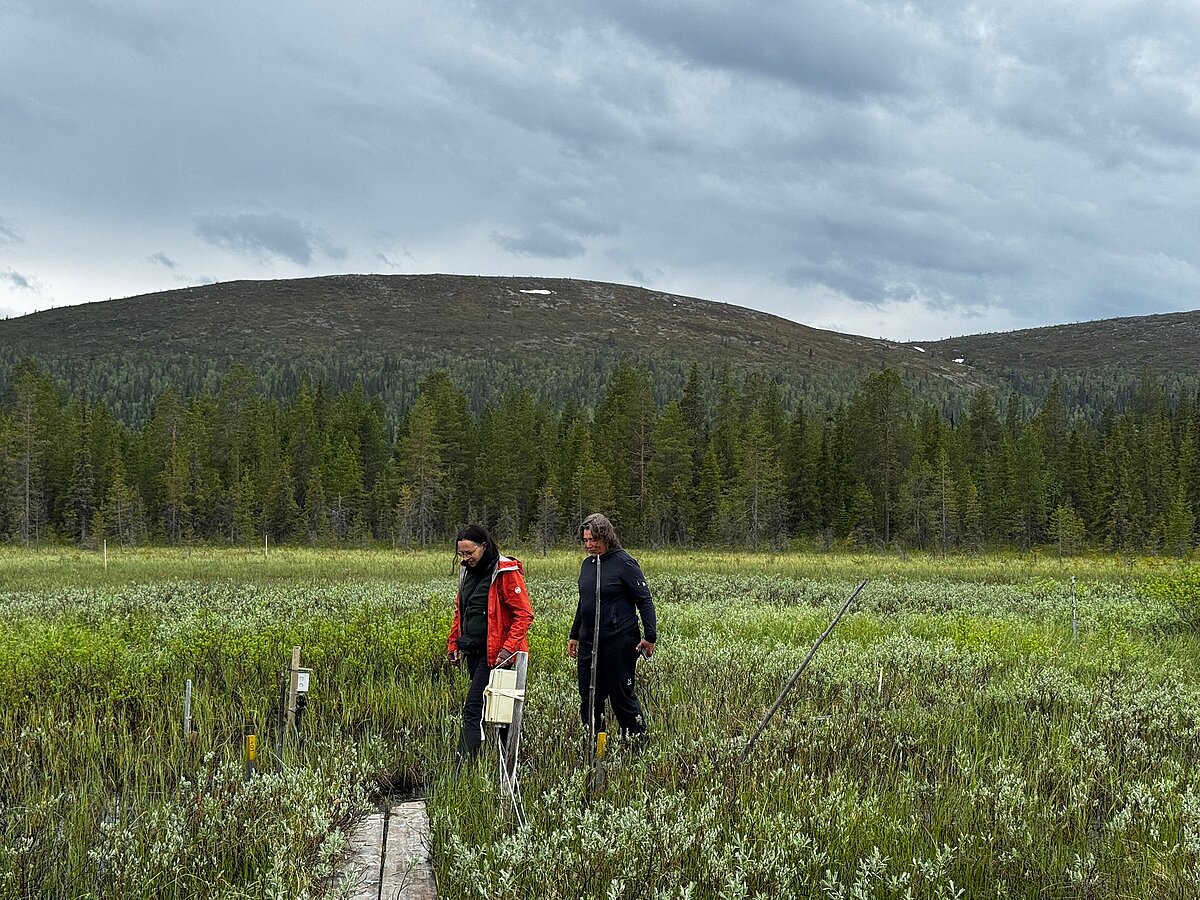
The LIFE PeatCarbon project sites, the Välisuo and Matorovansuo peatlands, are located in the municipality of Kittilä, Lapland within the Pallas Research Area, on state-owned land. The sites lie in the north-boreal vegetation zone, at the southern edge of northern Aapa mires (from Finnish aapasuo), and are part of the Pallas Ecosystem-Atmopshere Supersite. These peatlands feature a typical sloping string-and-flark pattern, with elongated hummocks (strings) perpendicular to the slope and wet depressions (flarks) in between. The strength of this patterning varies across the sites.
Several peatland communities are present within each site. The pre-drainage types include, for example, flark fens, herb-rich fens, and pine fens. Numerous springs are found along the peatland edges. The margins were drained for forestry in the late 1960s to early 1970s. While the central, wettest parts of the peatlands were not directly drained, the surrounding ditches have altered the hydrology, leading to vegetation changes such as increased shrub cover in Välisuo. As a result, some parts of the peatlands became well-drained and developed into peatland forests, whereas other areas were impacted but remained open, still resembling natural peatlands.
The Välisuo and Matorovansuo peatlands have been actively monitored since autumn 2022 to represent the pre-restoration situation. The study setup includes a systematic grid of vegetation inventory points, sets of GHG monitoring plots, and water table monitoring wells in both non-drained and drained sections of the peatlands. Drone imagery from before and after restoration is also used to assess habitat type distribution. In addition, a drained plot in an unrestored peatland forest downslope from Välisuo serves as a reference area.
In 2024, restoration activities included both rewetting and tree removal, as the goal is to restore the ecology of a pristine, open peatland in the area. Rewetting was carried out by blocking ditches – building dams from wood and peat, and filling ditches with tree trunks and peat. The main objective of the restoration is to re-establish a high-water table, natural water flow, and the original chemical composition. This will promote a shift in vegetation toward a more pristine state in the affected areas. The restoration ultimately aims to return the natural water balance that existed before drainage.
One of the project activities is to determine GEST types at the project sites in Latvia and Finland. An integrated approach is being implemented for GHG emission assessment, combining chamber-based gas flux and Eddi covariance tower measurements, GEST type classification, and remote sensing technologies. The methodology is based on classifying wetland GEST types according to dominant plant species, their ecological characteristics, habitat preferences, hydrological conditions, and soil types. This classification serves as the foundation for differentiating GHG emission calculations by assigning characteristic emission profiles to each GEST type.
In Latvia, GEST type classification was already applied during the LIFE PeatRestore project (2016–2021), which provided valuable experience in classifying GEST types. In Finland, this method was applied for the first time. Previously collected measurements indicate that wetter GEST types – such as those with high groundwater levels – are dominated by increased methane emissions, whereas drier types, characterized by greater tree cover and more active aerobic decomposition, show higher carbon dioxide emissions. These findings confirm the strong dependence of peatland emissions on hydrological and microbiological conditions.
To verify the GEST types in the field at the Välisuo and Matorovansuo peatlands, a site visit was organised. In total, 13 GEST types were identified across both sites, although the presence of two types remains uncertain. A scientifically important outcome of the visit was the identification of a new GEST type that has never been classified in any peatland in Latvia or the broader Baltic region. It belongs to a spring vegetation association, featuring many bryophyte species such as Paludella squarrosa, Philonotis seriata, and Ptychostomum weigelii, along with vascular plants strongly associated with spring habitats.
The most common GEST types found at the sites include Wet small sedges reeds mostly with moss layer (typical of wet flarks) and Very moist bog heath (characteristic of vegetation growing on strings). The most characteristic vascular plant and bryophyte species of Aapa mires include Rubus chamaemorus, Andromeda polifolia, Betula nana, various Carex and Eriophorum species, and Sphagnum lindbergii.
In June 2025, during a visit to Välisuo and Matorovasuo peatlands, the results of restoration activities carried out in winter 2024 were observed. A positive effect of restoration was seen in the field, such as raised water levels following dam construction and forest removal. Project experts visited the monitoring area, which included 121 GEST type assessment points.

 CONFERENCE
CONFERENCE

